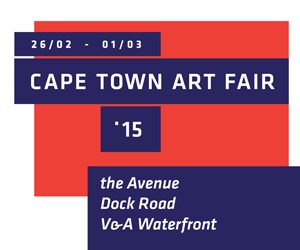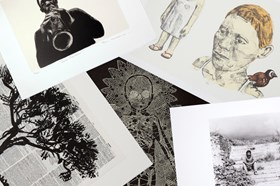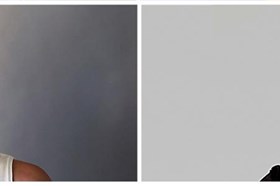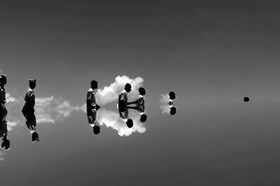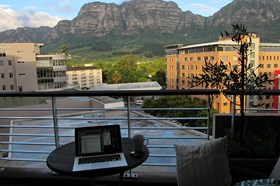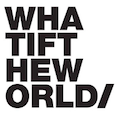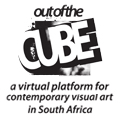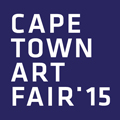artthrob artbio
Kiluanji Kia Henda
By M Blackman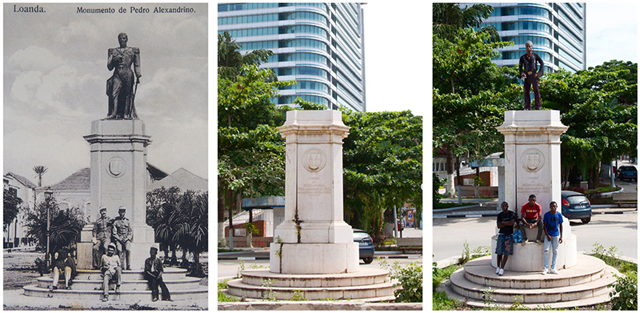
Kiluanji Kia Henda
Redefining The Power III, from ‘Series 75 with Miguel Prince’,
2013.
Photographic print mounted on aluminium
Triptych, each: 120 × 80 cm.
The Angolan artist Kiluanji Kia Henda once said when asked if the aim of his work was to rewrite or reinvent history: ‘Whoever doesn’t have a history should invent one!’ Although said with a spoonful of irony Kia Henda’s work does invent a history; a history that defies the essentialist idea that a nation has a culturally-specific narrative unique and enclosed to itself.
‘I have always had the feeling,’ he went on to say in the same interview with Ligia Afonso, ‘that I have experienced the direct consequences of the globalisation of war. Since I was a child, I have learnt that in Angola we were part of, or victims of, a great international strategy, and that what was happening was not caused only by our will. You are therefore compelled to adopt a position. I think that this awoke in me a concern for tackling themes on a broader scale.’
art events calendar
VIEW FULL CALENDARbuy art prints
edition of 10: R49,000.00
About Editions for ArtThrob
Outstanding prints by top South African artists. Your chance to purchase SA art at affordable prices.
FIND OUT MORE Editions for artthrobMODUS OPERANDI
Kia Henda’s work predominantly operates in the liminal space between fiction and reality. Neither a classical nor documenary photographer, Kia Henda appropriates and subverts the context of existing forms in order to create a fiction whose reality can never be entirely divorced from the real world.
In a work like ‘Icarus 13’ (2006) Kia Henda presented photographs and models of Angolan monuments and buildings. However the narrative he constructed around them placed them outside of their historical context reinventing them into a story of an Angolan space mission to the sun. Like much of his work Kia Henda uses references from several sources: Greek mythology, European, African, colonial, and post-colonial history. In doing so he creates a narrative that runs divergent and yet strangely concurrent to the more familiar narrative of history.
In ‘Icarus 13’ Kia Hendra’s point of departure is the ‘rocket’ that is to send the Angolan’s to their ‘Icarusian’ fate. In actual fact the supposed rocket is the grandiosely conceived mausoleum of Angola’s first president Agostinho Neto. Kia Henda’s art based exploration of Angola’s and indeed Africa’s history: its links to the colonial past and post-colonial present; its own aspirations and failures from both internal and external sources – are always at play in his created texts and documents. In a work such as O.R.G.A.S.M (2013), Kia Henda creates an imaginary NGO, the Organization of African States for Mellowness, in order to critique the incommensurate western notions of humanitarian and military aid that have so complicated Africa’s recent history.
In other bodies of work like ‘Balumuka - Ambush’ (2011) and ‘Redefining the Power’ (2011) he again investigates colonial and post-colonial histories. ‘Balumuka – Ambush’ which takes the form of photographs of disused military equipment and statues of colonial and historical figures placed in a transit-zone in Luanda questions just how Africa wishes to position itself historically. In a playful repost to this idea, in ‘Redefining the Power’ Kia Henda created a series of photographs of people striking poses on the empty plinths of Luanda where colonial statues once stood. In a sense this documentation of the performances were the fulfillment of what he once said with regards to inventing history.
In his latest video Concrete Affection – Zopo Lady (2014) Kia Henda creates a city empty of people. Inspired by Ryszard Kapuscinski’s book Another Day of Life, which documented the last days of colonial existence in Luanda in 1975, the video’s narrative voice-over investigates the tenuous hold we have on the memory of place, which seems so heavily etched into personal identity. The deserted streets of a concrete labyrinth is ‘being stripped of its memory’ as the city has emptied. The narrator, a voice of all of those disposed both colonized and ex-colonizer, loses connection with his own sense of identity as he leaves the deserted metropolis which he associates with the ‘marble’ of a European woman. ‘I feel that I am abandoning someone very dear to me. A fragile city asphyxiated between two eternities.’ Here Kia Henda combines the two narratives of Africa accepting each, on a person level, as valid – the universal experience of the loss of identity takes primacy over the culturally specific and factional narratives.
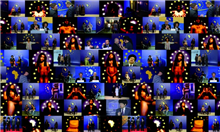
Kiluanji Kia Henda
As God Wants and the Devil Likes It (O.R.G.A.S.M Congress)
2011-2013
Photography printed on wall paper
ARTIST STATEMENT FOR AS GOD WANTS AND DEVIL LIKES IT
Organization Of African States For Mellowness.
'O.R.G.A.S.M.' is a multi-media project that consists of setting up an African non-governmental organisation [NGO] dedicated to charitable projects in the West. The project was inspired by the book Dead Aid by the Zambian author Dambysa Moyo, who after a long career in leading global financial institutions, undertook an enlightening investigation into the perverse strategy of Western aid organizations and their ability to perpetuate Africa's problems. 'O.R.G.A.S.M.', sets out deliberately to use the field of fiction, satire and irony to turn the established order on its head, and to create a portrait of paternalistic behaviour that divides and distances the two hemispheres, and which is deeply embedded in the discourse of the organisations and individuals in charge of the huge financial machine called charity.
The installation is based on a mural, painted with the organization's flag, referring to the use of symbols as one of the essential elements needed to set up an organisation, and the video, an eight- minute trailer with propaganda about the NGO's plans. The aim is to raise topical issues concerning the exploitation of humanitarian crises, and an aspect of wealth, given that the production of the film depends on the potential financial success of the campaign. In the O.R.G.A.S.M. trailer (an allusion to the films produced in Colombia in the 1970s, dubbed 'pornomisery'), the narrative slips between different stereotypes such as violence, visible poverty on the streets and the disconsolate celebrity, all of which belong to a universe of images and situations, used repeatedly and to excess by humanitarian organisations to legitimate the fifty-year history of Western philanthropy, irrespective of its actual effectiveness in solving Africa's problems. The speech and narration of the main personage, narrates the story that can be understood as generous but at same time threatening.
In the series of photos that gives name to the exhibition, As god wants and devil likes it, composed of manipulated pictures of the European Union leaders meetings, self-portraits of a performance by the artist, and portraits of happenings realized in Paris, Luanda and São Tomé e Princepe, where the artists invite the audience to be part of the photographic session with wall painting of the flag as the background. This series is an on going project, and the happening will take place every time the wall painting is exhibited. In this series there is the intention to reenact a kind of officials meeting during congress, while Kia Henda in his performance, goes through a mutation from diabolical to an celestial personage, and ending as a businessman. In this series there is an attempt to illustrate the ambiguous relation between Europe (or the West) and Africa. A relation in which we share a cultural, religious and a biological heritage, but at same time with remarkable hostility and warfare history. Between charity programs and the trade of armament, the same religious belief and a latent racism.
WHAT OTHERS HAVE SAID
The idealistic nature of his project largely owes to Kia Henda’s discovery, while living in Johannesburg in the late 1990s, of photography as 'a weapon of intervention and denunciation'. This near-militant faith in photography’s activist capabilities is tempered by a rival impulse: photography, as he has acknowledged, is capable of ‘sensationalism, omission or disorientation’, traits that he has recognized as useful.
Sean O’Toole Frieze Magazine 2012
Besides being ironically provocative, Henda’s work elicits from the viewer a reflection on art as a historical document.
Mara Ambrozic
[Kia Herndra], in 'Icarus 13', attempt[s] to make a claim on the future on behalf of an African state reverses the usual scenario wherein outside bodies, whether through global military power, politico-financial constraints like the 'structural adjustment programmes,' or indeed through culture and media hegemonies, appropriate the right to describe the future.
Al Cameron & Nav Haq in Africa is a Country
Effectively, 'Icarus 13' reshuffles history, plays the colonial past 'off key', Africans stereotypes and the imperial rampancy alike, but the interest of this 'program', that which makes it destabilizing, is the fact that it operates on the oscillating ground that goes from document to fiction’.
Marta Mestre
CURRENTLY
Kia Henda is currently showing at the Brundyn + gallery in Cape Town. He is following this up with an exhibition in Lisbon, after which he will return to Angola.

Kiluanji Kia Henda
Othello's Fate (Act IV)
2013
Digital print on matt paper mounted on aluminium
110 × 170 cm
BIOGRAPHY
Kiluanji Kia Henda was born in 1979 in Luanda and works between Luanda and Lisbon. His solo exhibitions have been held in galleries and institutions around the world, including his solo at the Kunstraum in Innsbruck (2013); 'Self-Portrait As a White Man' at Galleria Fonti in Naples (2010) and 'Portraits of a Slippery Look' at the Gothe-Institut in Nairobi (2008). His group exhibitions include, among many others, 'Giving Contours to Shadows' at the Neuer Berliner Kunstverein, Berlin (2014); 'The Shadow Took Shape, Studio Museum in Harlem' (2013) and 'No Fly Zone: Unlimited Mileage' at the Berardo Museum of Modern and Contemporary Art, Lisbon. Since 2005, Henda has participated in a number of biennales and triennials, such the Dak’Art Biennale (2014); 9th Bienal de Sao Paolo (2010); Trienial de Luanda (2010 and 2007); the Guangzhou Triennale (2008) and the Venice Biennale (2007).
CV
SOLO EXHIBITIONS:
2013 Kiluanji Kia Henda, Kunstraum Innsbruck, Innsbruck
2010 Self-Portrait As A White Man, Galleria Fonti, Naples
2008 Portraits of a Slippery Look, Goethe-Institut Nairobi, Nairobi
2007 Between The Two Red Telephones, Galleria Fonti, Naples
SELECTED GROUP EXHIBITIONS:
2014 Die Göttliche Komödie. Himmel, Hölle, Fegefeuer aus Sicht afrikanischer Gegenwartsku¨nstler - Museum fu¨r
Moderne Kunst (MMK), Frankfurt/Main
2014 Giving Contours to Shadow, Neuer Berliner Kunstverein (NBK), Berlin
2014 A Thousand of Him, Scattered: Relative Newcomers In Diaspora, Edinburgh, Scotland
2014 Dak'Art 2014 - 11ème Biennale de l’Art Africain Contemporain - Dak'Art Biennale de l’art africain
contemporain, Dakar
2013 The Shadow Took Shape, The Studio Museum in Harlem, New York City, Ny
2013 Der Ungeduld der Freiheit Gestalt zu geben, Wu¨rttembergischer Kunstverein, Stuttgart,
2013 Monday Begins on Saturday, Bergen Assembly, Bergen
2013 A Thousand of Him, Scattered: Relative Newcomers In Diaspora - Stills, Edinburgh, Scotland
2013 El mañana ya estuvo aquí, Museo de Arte Contemporáneo de Monterrey MARCO, Monterrey, NL
2013 Superpower: Africa In Science Fiction, Arnolfini, Bristol
2013 The Beautyful Ones, Nolan Judin Berlin, Berlin
2013 No Fly Zone. Unlimited Mileage, Berardo Museum Collection of Modern and Contemporary Art, Lisbon
2012 100 Artworks, 10 Years: A Selection from the PLMJ Foundation Collection, Fundação Arpad Szenes –
Vieira da Silva, Lisbon
2012 Les Prairies, Les Ateliers de Rennes, Biennale d'art contemporain, Rennes
2012 Tomorrow was already here, Museo Tamayo, Mexico City
2012 You Are Now Entering, Centre for Contemporary Art, CCA Derry, Derry, Northern Ireland
2011 Une légende en cache une autre, Bétonsalon, Paris
2011 Experimental Station, Laboral, Centro de Arte y Creación Industrial, Gijón
2011 Spacecraft Icarus 13: Narratives of Progress from Elsewhere, Basis voor Actuele Kunst - BAK, Utrecht
2011 Besphoto 2011, Pinacoteca do Estado, São Paulo
2011 Fluxus: African Contemporary Art, Ex Chiesa Dei Santi Carlo E Agata, Reggio Emilia
2011 Arte Lusófona Contemporânea, Galeria Marta Traba, Fundação Memorial da América Latina, São Paulo
2011 Experimental Station. Research And Artistic Phenomena, Centro de Arte Dos de Mayo (CA2M), Móstoles
2011 THE LAST FIRST DECADE, Ellipse Foundation, Alcoitão
2011 Other Possible Worlds, Neue Gesellschaft fu¨r Bildende Kunst (NGBK), Berlin
2011 Propaganda by Monuments, Contemporary Image Collective (CIC), Cairo
2011 BES Photo 2011, Berardo Museum, Collection of Modern and Contemporary Art, Lisbon
2011 The Days Of This Society Are Numbered, Abrons Art Center, New York City, NY
2011 Idioma Comum: Artistas da CPLP na Colecção da Fundação PLMJ, Fundação PLMJ, Lisbon
2010 9° Bienal de São Paulo, Bienal de Sao Paulo, São Paulo
2010 Trienal de Luanda 2010, Trienal de Luanda, Luanda
2010 Art Enclosures III, Fondazione Bevilacqua La Masa, Venice
2010 Luanda, suave e frenética 2, Museu de Arte Moderna da Bahia (MAM), Salvador
2010 Wild is the Wind, Gutstein Gallery, Savannah College of Art And Design, Savannah, GA
2009 Black Atlantic, ARGE Kunst Galerie Museum, Bolzano
2009 Bad Form: Things and Stuff, Blank Projects, Cape Town
2009 Claúdia Veiga, Ihosvanny, Kiluanji, Yonamine, SOSO arte contemporânea, Sao Paulo, São Paulo
2008 INPUT, Colecção Sindika Dokolo, Museu Nacional de História Natural, Luanda
2008 The 3rd Guangzhou Triennial, Guangzhou, Guangdong
2007 52nd International Art Exhibition Venice Biennale / La Biennale di Venezia, Venice
2007 Trienal de Luanda, Luanda
2006 SD Observatorio, Institut Valencià d'Art Modern (IVAM), Valencia
2006 Sindika Dokolo, Contemporary African Art Collection, SOSO arte contemporânea Luanda, Luanda
2005 Dipanda Forever, SOSO arte contemporânea, Luanda, Luanda
2005 AC-Angola Combatente, SOSO arte contemporânea, Luanda, Luanda
COLLECTIONS:
Nomas Foundation, Rome

